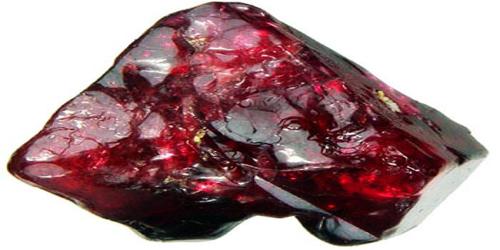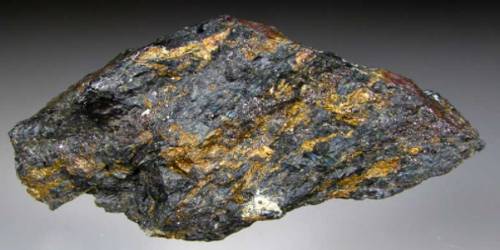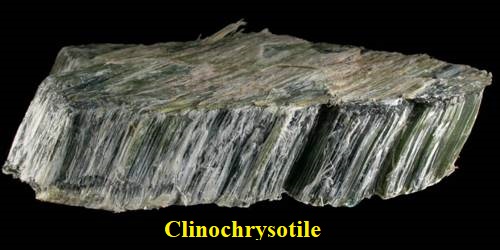Definition –
“Spinel” (/spɪˈnɛl/) is a mineral that occurs in a wide variety of colors and it is a traditional birthstone for the month of August. It is the magnesium/aluminium member of the larger spinel group of minerals. It has the formula MgAl2O4 in the cubic crystal system. Its name comes from the Latin word “spinella”, which means spine in reference to its pointed crystals.
Spinel occurs in a rich red color that looks like ruby. It occurs in a nice blue color that looks like sapphire. It occurs in many other colors as well. Spinel was a late addition to the modern birthstone lists in 2016. Perhaps the makers of these lists wanted to give people born in August a wider variety of color choices.
Pure Spinel is colorless, but impurities are responsible for the wide range of colors. The most valuable and desirable Spinel color is a deep blood red, though blue, yellow, orange, pink, and purple colors also make fine gemstones. It is often fluorescent in ultraviolet light, and this can be helpful in its identification.
Spinel is a very hard and durable gem. It has a Mohs hardness of 7.5 to 8. Diamond, ruby, sapphire, and topaz are the only widely-used gem materials with a higher hardness.
Occurrence and Properties of Spinel –
Spinel is found as a metamorphic mineral, and also as a primary mineral in rare mafic igneous rocks; in these igneous rocks, the magmas are relatively deficient in alkalis relative to aluminium, and aluminium oxide may form as the mineral corundum or may combine with magnesia to form spinel. This is why spinel and ruby are often found together. The spinel petrogenesis in mafic magmatic rocks is strongly debated, but certainly results from mafic magma interaction with more evolved magma or rock (e.g. gabbro, troctolite).

The most outstanding Spinel in size, color, and quality is from Burma. Other sources of gem Spinel are Sri Lanka, Cambodia, Vietnam, Thailand, Tadjikistan, Afghanistan, Pakistan, Tanzania, and Madagascar.
Since 2000 in several locations around the world have been discovered spinels with unusual vivid pink or blue color. Such “glowing” spinels are known from Mogok (Myanmar), Mahenge plateau (Tanzania), Lục Yên District (Vietnam) and some more localities. In 2018 bright blue spinels have been reported also in the southern part of Baffin Island (Canada). The pure blue coloration of spinel is caused by small additions of cobalt.
Fine red Spinel is actually rarer than Ruby of equal color. However, its is an undervalued gemstone, with its cost is about 30% lower then comparable Ruby. The scarcity of good Spinel is the reason for its lack of demand and popularity. Gem Spinel is in very limited supply, and therefore jewelry companies and gem cartels don’t really market this gemstone to the consumer. This inhibits Spinel from being a more mainstream gemstone.
Spinel, (Mg,Fe)(Al,Cr)2O4, is common in peridotite in the uppermost Earth’s mantle, between approximately 20 km to approximately 120 km, possibly to lower depths depending on the chromium content. At significantly shallower depths, above the Moho, calcic plagioclase is the more stable aluminous mineral in peridotite while garnet is the stable phase deeper in the mantle below the spinel stability region. Spinel, (Mg,Fe)Al2O4, is a common mineral in the Ca-Al-rich inclusions (CAIs) in some chondritic meteorites.
Spinel is easily synthesized and can be made into any color by adding impurities. Synthetic Spinel is often simulated to replicate many other gemstones such as Diamond, Sapphire, and Zircon. Because of the abundance of synthetic Spinel, one must always be careful only to purchase this gemstone from reputable dealers. Almost all colorless Spinel gemstones are synthetic, as it rarely occurs colorless in nature.
Spinel crystallizes in the isometric system; common crystal forms are octahedra, usually twinned. It has an imperfect octahedral cleavage and a conchoidal fracture. Its hardness is 8, its specific gravity is 3.5-4.1, and it is transparent to opaque with a vitreous to dull luster. It may be colorless, but is usually various shades of pink, rose, red, blue, green, yellow, brown, black, or (uncommon) violet. There is a unique natural white spinel, now lost, that surfaced briefly in what is now Sri Lanka. Some spinels are among the most famous gemstones; among them are the Black Prince’s Ruby and the “Timur ruby” in the British Crown Jewels, and the “Côte de Bretagne”, formerly from the French Crown jewels. The Samarian Spinel is the largest known spinel in the world, weighing 500 carats (100 g).
The transparent red spinels were called spinel-rubies or balas rubies. In the past, before the arrival of modern science, spinels and rubies were equally known as rubies. After the 18th century, the word ruby was only used for the red gem variety of the mineral corundum and the word spinel came to be used. “Balas” is derived from Balascia, the ancient name for Badakhshan, a region in central Asia situated in the upper valley of the Panj River, one of the principal tributaries of the Oxus River. Mines in the Gorno Badakhshan region of Tajikistan constituted for centuries the main source for red and pink spinels.
Similar Spinel Gemstone: Red Spinel can be identical in appearance to Ruby. However, Spinel is usually lighter in color, and the deep-red Spinel is usually more of a brick-red then the Red of Ruby which has a slight blue or purple tinge to it. However, only optical properties and hardness can truly distinguish these two gemstones. Red Spinel can also closely resemble red Tourmaline and dark red Spinel may resemble Garnet.
Blue Spinel may resemble Zircon, Topaz, and Sapphire; and pink Spinel may resemble Morganite, pink Topaz, and pink Tourmaline. Purple Spinel may appear similar to Amethyst, though Spinel is usually bluer in tone than Amethyst.
Synthetic Spinel: Synthetic spinel, accidentally produced in the middle of the 18th century, has been described more recently in scientific publications in 2000 and 2004. By 2015, transparent spinel was being made in sheets and other shapes through sintering. Synthetic spinel, which looks like glass but has notably higher strength against pressure, can also have applications in military and commercial use.
Use and Benefits of Spinel –
Spinel naturally occurs in octahedral crystals. In well-shaped red crystals, gem cutters may even out a crystal into a perfect octahedron. These “crystals” are occasionally be worn in jewelry without any further faceting.
The deep-red variety, often called Ruby Spinel, is the most prized form and is a very good substitute for Ruby. Spinel is also an important pink gemstone. The opaque, black variety, known as Pleonast, has a good luster and is used as a black gemstone. It is also sometimes artificially created for industrial use.
Spinel is a stone of hope, revitalization, and feeling the joy of being alive. It comes in a wide range of colors, which means it can be used to revitalize every chakra. It is perfect to reach for when people are feeling a lack of energy or enthusiasm, or finding it hard to pull out of negative thoughts. Spinel helps bring fresh energy to our mind, body, heart and spirit.
Spinel is a good stone for stressed out, type-A, go-go-go personalities who need some help to switch into a lower gear and let themselves relax. It makes a great gift for any workaholic friends in our life to help them calm down and see the bigger picture, and receive the abundance they already have all around them.
Information Sources:
















